

What is Tourism Product? Definition, Types, Characteristics
- Post last modified: 3 October 2021
- Reading time: 14 mins read
- Post category: Uncategorized
What is Tourism Product?
Tourism Products are a combination of goods and services demanded by a tourist during travel to and stay at a destination. These include natural, cultural and manmade attractions and facilities such as hotels, transport and ancillary services.
In this process, tourists derive an experience which varies from individual to individual. From a broader perspective, the sum total of experiences derived by the tourists during the entire trip can be considered as the product.
Table of Content
- 1 What is Tourism Product?
- 2 Definition of Tourism Product
- 3.1 Natural Tourism Product
- 3.2 Man-Made Tourism Product
- 3.3 Symbiotic Tourism Product
- 3.4 Event Based Tourism
- 3.5 Site Based Tourism Product
- 4.1 Intangibility
- 4.2 Inseperatability
- 4.3 Perishability
- 4.4 Heterogeneity
- 4.5 Essentially of Users Presence
- 4.6 Complexity in Marketing
- 4.7 Absence of Ownership
Definition of Tourism Product
Burkat and Medlik say tourism products to an array of integrated products, which consist of objects and attractions, transportation, accommodation and entertainment, where each element of the tourism product is prepared by individual companies and are offered separately to consumers (tourist/tourist).
The tourism “product” is not the destination, but it is about the experiences of that place and what happens there. – Chris Ryan
Economist M. Sinclair and Mike Stabler define the tourism product as a “composite product involving transport, accommodation, catering, natural resources, entertainment and other facilities and services, such as shops and banks, travel agents and tour operators.”
According to Suswantoro (2007:75) on substantially the understanding of tourism products “is obtained and the overall service felt or enjoyed by tourists since he left his residence to the tourist destination of his choice and to return home where she originally departed”.
Types of Tourism Products
Following figure describes the classification of Tourism Product:
Natural Tourism Product
Man-made tourism product, symbiotic tourism product, event based tourism, site based tourism product.
These are the products connected to the natural environment. Natural environment that constitutes natural resources which is related to area, climate and its settings, and the landscapes. These natural resources are the most important elements in a destination’s attraction. Such as countryside, climate, natural beauty, water, flora and fauna, wildlife, beaches, deserts, islands or any scenic attraction.
Some examples of natural tourism products in India are Marina beach- Chennai, Darjeeling hill station-West Bengal, Islands of Andaman & Nicobar- Andaman & Nicobar, Deserts of Thar-Rajasthan, etc
Something which is not natural, found in the destinations to attract the tourists. These are man-made creations. As per the tourism point of view they are made for pleasure, leisure or business.
Man-made tourism products are further divided into three subtypes:
- Sites and areas of archaeological interest
- Historical buildings and monuments
- Places of historical significance l museums and art galleries
- Political and educational institutions
- Religious institutions
- Fairs and festivals
- Arts and handicrafts
- Folklore l native life and customs
- Amusement and recreation parks
- Sporting events
- Zoos and oceanariums
- Cinemas and theatres
- Night life l cuisines
Examples of Man-made tourism products are Ajanta and Ellora cave-Maharashtra (Cultural), Surajkund Craft Mela-Haryana (Traditional), Essel World-Mumbai, etc
This type of tourism product do not fall in any particular category because they are a blend of nature and man but the core attraction is nature. These are the natural resource that has been converted into a tourism product by maintaining and managing them.
In other words man has taken initiative to preserve the natural aspects of earth and also managed in a way to provide best possible services to the tourists who come for the visit, for example, accommodation, parking facilities, etc. Some examples are National Park or Wildlife Sanctuaries, Flower Festival, Marine Park, Aero and Water Sports, Botanical Garden etc.
In India, there are many national parks like Ranthambhore-Rajasthan, where tigers and many animals are preserved and tourists are given facilities like a jungle safari.
Product Here event is the main source of attraction. Tourist comes to observe and participate in the events. Events are temporary in nature and are often mounted in order to increase the number of tourists to a particular destination.
Some events are for a short time scale while other last for longer days. Sometimes events are mounted in those places where the tourist’s eye usually don’t reach such as unusual exhibitions.
Some examples of event-based tourism product include Camel Polo at Jaisalmer- Rajasthan, Kite flying in Ahmedabad-Gujarat, where tourists also participate and observes. In Snake boat race-Kerela, one can enjoy witnessing it. Short time scale event includes Republic day parade-New Delhi and long days event include Khajuraho dance festival-Madhya Pradesh.
It is a particular site or a place, permanent in nature which is the main source of attraction for the tourists. In India examples are like Taj Mahal, Beaches of Goa, Sunset at Kanyakumari, Temples of Khajuraho, etc.
Characteristics of Tourism Product
Following are the main characteristics of tourism products:
Intangibility
Inseperatability, perishability, heterogeneity, essentially of users presence, complexity in marketing, absence of ownership.
As discussed earlier in this chapter, tourism products are actually the services that are being sold to the tourists, and it’s not the goods. Services can’t be seen, smelled, felt or touched, it can only be experienced. What can be seen is their effect.
For example, a guide’s comments can be heard. A travel agents books a ticket from place A to B. The ticket is just a piece of paper, an entry pass for using the service. An airline provides the service of transportation, comfort and leisure. A thorough evaluation of the service before buying it is therefore impossible and leads customers to use other cues to help them assess the service like the interior of the restaurant, the appearance of the hotel entrance or the behaviour of the receptionist.
A service of a tourism product cannot be separated from the provider of the service. For most services, the producer and the seller are the same people. Services are manufactured and consumed at the same time. In the case of products, consumption takes place after production and often far away from the factory.
In the case of tourism products for example a guide has to be present to explain the attraction. A pilot has to be present to fly a plane. Both service providers and the service user have to be physically present for mutually satisfying the exchange of service. The visitor to a national park cannot experience counter service if the receptionist is not present, nor can the receptionist render the service is the visitor is absent.
The tourism product is highly perishable, which means it cannot be stored. For example, a hotel room or an aeroplane seat that is not sold on a particular day, is a lost sale. If the tourists don’t visit a particular place, the opportunity is lost. If the opportunity is lost, the moment is lost. This adversely affects the tourism business.
The demand has to be managed by the marketer in such a way as to ensure that as little capacity as possible is lost. The problem is unique for the tourism industry. Due to these reason sometimes heavy discount is offered by hotels or transport generating organization.
Services offered by most people are never the same. There is some degree of variability present in almost all types of services. This may be due to the extensive involvement of people in the production of service. This issue is not present when a machine dominates. Depending on the mood, behaviour, working style, efficiency and knowledge of the people variability exist.
For example, all air hostesses cannot provide the same quality service like the other. Yet again the same individual air hostess may not perform the same uniform service both in the morning as well as in the evening.
Even the tour package and the aircraft can’t be consistent of equal standards because an aircraft can de-shape the travelling pleasure into a nightmare and a holiday seaside is ruined by the prolonged rainy spell.
Another reason for variability of service is the involvement of customers in the process of product delivery and consumption system. For example, a musician performing at a program may not perform with uniformity. His performance will depend on the response and appreciation of the audience. Hence service varies from person to person, time to time and from situation to situation.
In travel and tourism businesses, service quality depends on uncontrollable factors and there is no sure way of knowing whether the service delivered matched what was planned or promoted, or what was expected by the customer.
Presence of the user is necessary to avail the service. The customer or the guest has to be personally present on the spot. It can’t be brought to the user. As in the case of other tangible goods, the buyer can avail the service from anywhere or from his home. But in the case of tourism products, it is not at all possible. The tourist has to go to the tourist attraction to experience the tour.
However the marketers here need an in-depth study of users behaviour, tastes, preferences, likes and dislikes so that expectations and realities coincide and satisfaction is made possible.
Tourism product involves complexity in marketing. It requires a lot of effort to convince a buyer. As in the case of travel agents. In order to sell their tour package they need to convince the customer by introducing various facilities, discounts and services. Product demonstration is bit difficult in the case of tourism product.
As in the case of tangible goods like television. As soon as we buy it, we become the owner of it. But this is not the case with tourism products. A tourism product when sold to the customer or tourist, he can only avail the service but can’t be its owner.
For example, while buying a hotel room, while buying a seat in an aircraft or a luxurious train, you can only take the facilities of the service for a certain time. You can’t be its owner for lifelong.
Please Share This Share this content
- Opens in a new window X
- Opens in a new window Facebook
- Opens in a new window Pinterest
- Opens in a new window LinkedIn
- Opens in a new window Reddit
- Opens in a new window WhatsApp
You Might Also Like
Styles of service in restaurant | techniques, order to serving meals, handling service dishes and utensils, good customer service: characteristics, features, impact, satisfaction, yoghurt and cream, international tourism organisations, what is stock in food production components, categories and types, uses, preparation, evaluating quality, office record management: objectives, benefits, key to effective, leave a reply cancel reply.
Save my name, email, and website in this browser for the next time I comment.
UN Tourism | Bringing the world closer

Competitiveness
- Market Intelligence
- Policy and Destination Management
Product Development
Share this content.
- Share this article on facebook
- Share this article on twitter
- Share this article on linkedin
As defined by UN Tourism, a Tourism Product is "a combination of tangible and intangible elements, such as natural, cultural and man-made resources, attractions, facilities, services and activities around a specific center of interest which represents the core of the destination marketing mix and creates an overall visitor experience including emotional aspects for the potential customers. A tourism product is priced and sold through distribution channels and it has a life-cycle".
Rural tourism

UN Tourism understands Rural Tourism as "a type of tourism activity in which the visitor’s experience is related to a wide range of products generally linked to nature-based activities, agriculture, rural lifestyle / culture, angling and sightseeing.
Gastronomy and Wine Tourism

As global tourism is on the rise and competition between destinations increases, unique local and regional intangible cultural heritage become increasingly the discerning factor for the attraction of tourists.
Mountain Tourism

Mountain Tourism is a type of "tourism activity which takes place in a defined and limited geographical space such as hills or mountains with distinctive characteristics and attributes that are inherent to a specific landscape, topography, climate, biodiversity (flora and fauna) and local community. It encompasses a broad range of outdoor leisure and sports activities".
Urban Tourism

According to UN Tourism, Urban Tourism is "a type of tourism activity which takes place in an urban space with its inherent attributes characterized by non-agricultural based economy such as administration, manufacturing, trade and services and by being nodal points of transport. Urban/city destinations offer a broad and heterogeneous range of cultural, architectural, technological, social and natural experiences and products for leisure and business".
Sports Tourism

Tourism and sports are interrelated and complementary. Sports – as a professional, amateur or leisure activity – involves a considerable amount of traveling to play and compete in different destinations and countries. Major sporting events, such as the Olympic Games, football and rugby championships have become powerful tourism attractions in themselves – making a very positive contribution to the tourism image of the host destination.
Shopping Tourism

Shopping Tourism is becoming an increasingly relevant component of the tourism value chain. Shopping has converted into a determinant factor affecting destination choice, an important component of the overall travel experience and, in some cases the prime travel motivation.
What is a tourism product? Classification of tourism product services
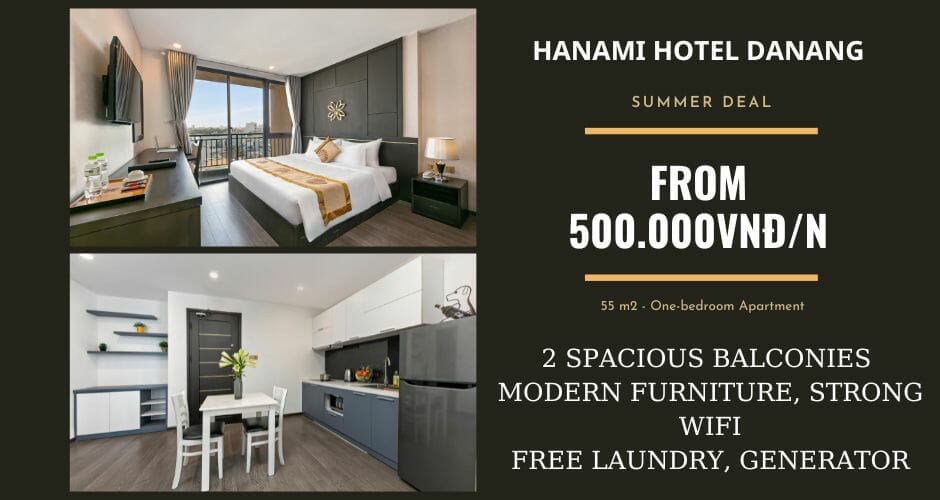
Here at Hanami Hotel Danang , nestled in the heart of this vibrant coastal city, we have come to understand the true essence of what a tourism product is. It is more than just a service; it’s an experience—a tapestry of local culture, meticulous service, and memories waiting to be woven.
What is a tourism product? Classification of tourism product services. Venture with us as we explore the physical and emotional contours of these offerings, understanding their importance in the grand puzzle of travel and human connection.
This exploration is as much a journey for us as it is for you—arousing passion, expanding knowledge, and cementing our shared love for the world’s cultures and the adventures they hold.

What is a tourism product? Definition of tourism product
A tourism product is the elements and services created to meet the needs of tourists during their travels. These are the components and experiences that tourists can purchase or use to enjoy and make the most of their trip.
Tourism products include transportation means such as airplane tickets, train tickets, or bus tickets for tourists to reach their desired destinations. Additionally, there are accommodation services like hotels, resorts, guesthouses, or homestays, providing comfortable and convenient places for tourists to stay.
Tour packages are a popular tourism product, offering a service package for tourists to visit and explore destinations. They often include transportation, accommodation, tour guides, and related tourism activities. Tour guides are also an important service, accompanying tourists and providing information, guidance, and navigation throughout the trip.
Moreover, tourism products also include entertainment and sightseeing activities. Tourists can engage in activities such as nature exploration, historical site visits, enjoying the sea, and outdoor sports activities. Tourism products may also include culinary services, shopping, and visiting entertainment venues.
Components of a tourism product
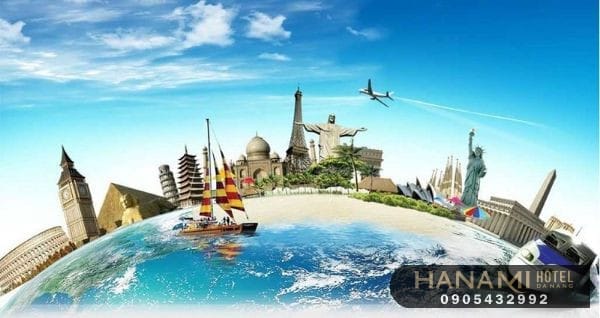
Having grasped the concept of a tourism product, we will delve into its fundamental components. A tourism product is a complete experience from when a tourist leaves home until they finish their trip. From this, we can infer that the elements constituting a tourism product include:
Transportation
Transportation is an indispensable element of a tourism product. It ensures that tourists have the means to arrive at and move between different destinations during their trip.
The modes of transportation are diverse and varied, including airplanes, trains, buses, bicycles, motorcycles, and even other vehicles such as boats, cruise ships, cable cars, and horse-drawn carriages.
Airplanes are the primary mode of transportation for international or long-distance travel. They offer speed, convenience, and comfort to tourists. Airplanes also enable tourists to overcome long distances and access hard-to-reach destinations that might not be possible with other modes of transport.
Trains are a popular mode of transportation for domestic and international travel. Buses are a flexible and cost-effective option for city and regional travel. Bicycles and motorcycles help tourists save on transportation costs while also providing a more intimate experience with the environment and local community.
Additionally, in certain special cases, other modes of transportation such as boats, cruise ships, cable cars, and horse-drawn carriages may be used.
Boats and cruise ships are suitable for exploring seas, rivers, lakes, and islands. Cable cars offer thrilling sensations and stunning views from above. Horse-drawn carriages provide a traditional and environmentally friendly experience for tourists.
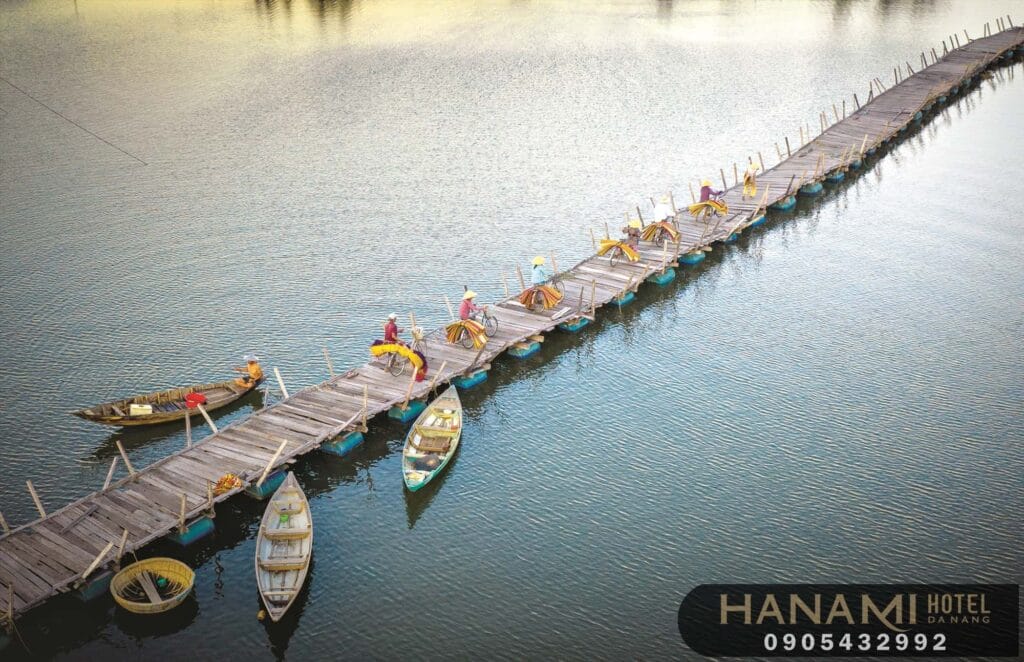
Accommodation Services
The provision of rest and lodging is a crucial part of a tourism product. When traveling, tourists need a safe and comfortable place to rest after their exploratory activities. Accommodations can include various types such as hotels, resorts, guesthouses, rental apartments, homestays, camping sites, and tents.
Hotels are a popular choice for tourists, especially in urban and developed tourist areas. Hotels typically offer a range of services and amenities such as comfortable bedrooms, restaurants, bars, fitness centers, and other facilities like spas and swimming pools.
Hotels can be categorized by star ratings to assess the level of comfort and quality of service. Whether it’s a hotel, resort, guesthouse, rental apartment, homestay, or camping site and tent, tourist accommodations must meet the basic needs of tourists for comfort, safety, and convenience.
Bedrooms should be fully equipped with necessary amenities such as beds, wardrobes, and lighting. Additionally, bathrooms must be clean and include facilities such as showers, bathtubs, sinks, and personal hygiene items.
Moreover, accommodations must also provide other amenities and services such as restaurants, bars, fitness centers, spas, swimming pools, cable TV, internet, and room service. The service staff should also be friendly, professional, and ready to assist tourists throughout their stay.
Activities and Experiences

Travel is not just about moving to a new location, but it is also an adventure filled with experiences and exciting activities. As tourists embark on their journey, many activities and experiences await them.
One of the most significant experiences in travel is discovering famous tourist landmarks. Tourists can visit large cities and charming small towns, explore the unique architecture of temples, shrines, palaces, and churches, or admire the stunning scenery of dense forests, mountains, rivers, and seas.
Each destination has its own beauty and draws tourists into its historical and cultural story. Beyond exploration, tourists can also participate in entertaining activities.
With beautiful beaches, tourists can dive into the underwater world through activities like scuba diving, windsurfing, sailing, or surfing. Rivers and lakes also invite tourists to go kayaking or enjoy exciting boat trips.
If tourists want to challenge themselves, they can go mountain climbing, hiking, or exploring fascinating caves. These activities not only allow tourists to enjoy the incredible natural beauty but also bring a sense of excitement and satisfaction.
An indispensable part of travel is enjoying local cuisine. Tourists can embark on a culinary adventure, savoring specialty and traditional dishes at restaurants, eateries, and night markets.
Sampling unique foods and immersing oneself in local culinary culture is a wonderful way to gain a deeper understanding of the country and its people.
Guidance and Support Services
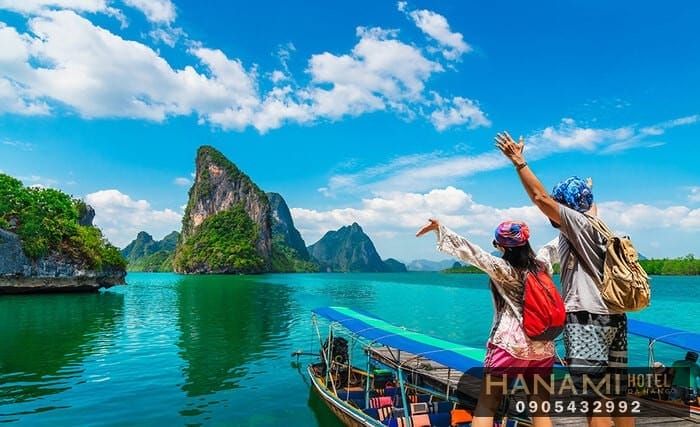
Services that provide information, guidance, and support for tourists during their travels are crucial to ensure they have a smooth and memorable trip. First, professional tour guides play an important role in providing information and guidance to tourists.
Customer support services also play a vital role in meeting the needs and requests of tourists. Customer support staff will advise and assist tourists in booking, ticket changes, itinerary information, and answering related queries.
Tourism information is also an essential service to help tourists get the necessary information before and during their trip. Tourist information centers provide tourists with information about tourist sites, destinations, schedules, and activities.
Tourists can learn about famous landmarks, local events, and available entertainment activities. Tourism information also includes tour packages, attraction tickets, and pricing information so tourists can choose and shape their trip.
Food and Culinary Services
In the field of tourism, elements related to culinary services and food play an important role in providing a unique and culturally rich experience for tourists. These services include a range of options such as restaurants, cafes, bars, hotel dining services, or on-site cooking services.
Restaurants are where tourists can enjoy a variety of local signature dishes. Restaurants may serve traditional dishes, local specialties, and international cuisine. By tasting local dishes, tourists have the opportunity to experience and discover the flavors, aromas, and cooking styles characteristic of the destination.
Restaurants can also create a unique space and environment for tourists to enjoy their meal and the culinary atmosphere.
Cafes and bars are also popular spots for tourists to enjoy drinks and light snacks. Cafes typically offer a variety of coffees, from traditional black coffee to special and blended types.
Additionally, cafes may serve other beverages such as tea, fruit juices, and light alcoholic drinks. Bars usually focus on serving alcoholic beverages and provide an entertainment space for tourists.
Classification of tourism products
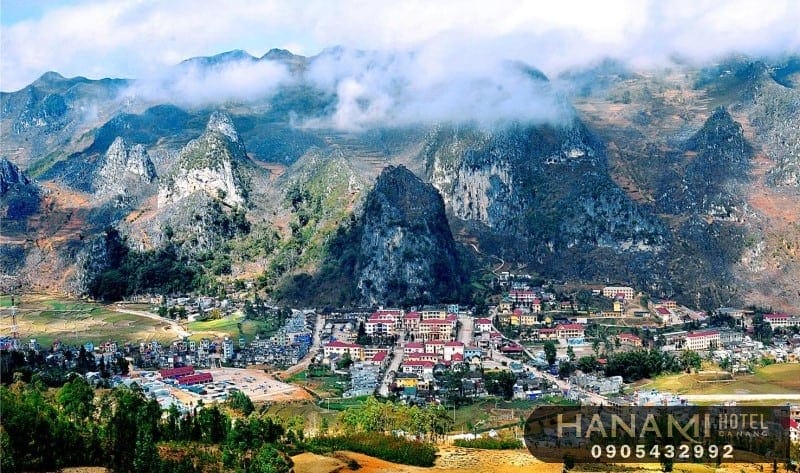
There are many ways to classify tourism products based on various factors. Below is a common classification based on the main types of tourism products:
Cultural Tourism
This includes exploring historical sites, scenic landmarks, unique architecture, and experiencing the culture of a place. This could involve visiting museums, touring historical sites, attending local cultural festivals and events, and learning about the culture, history, and traditions characteristic of a culture.
Exploring historical sites, scenic landmarks, unique architecture, and experiencing the culture of a place is an important part of the travel experience. Through visiting museums, touring historical sites, attending local cultural festivals and events, and learning about the culture, history, and traditions of a culture, tourists have the opportunity to access the profound and unique aspects of the place they visit.
This not only provides tourists with a great experience but also expands their knowledge and understanding of the world around us.
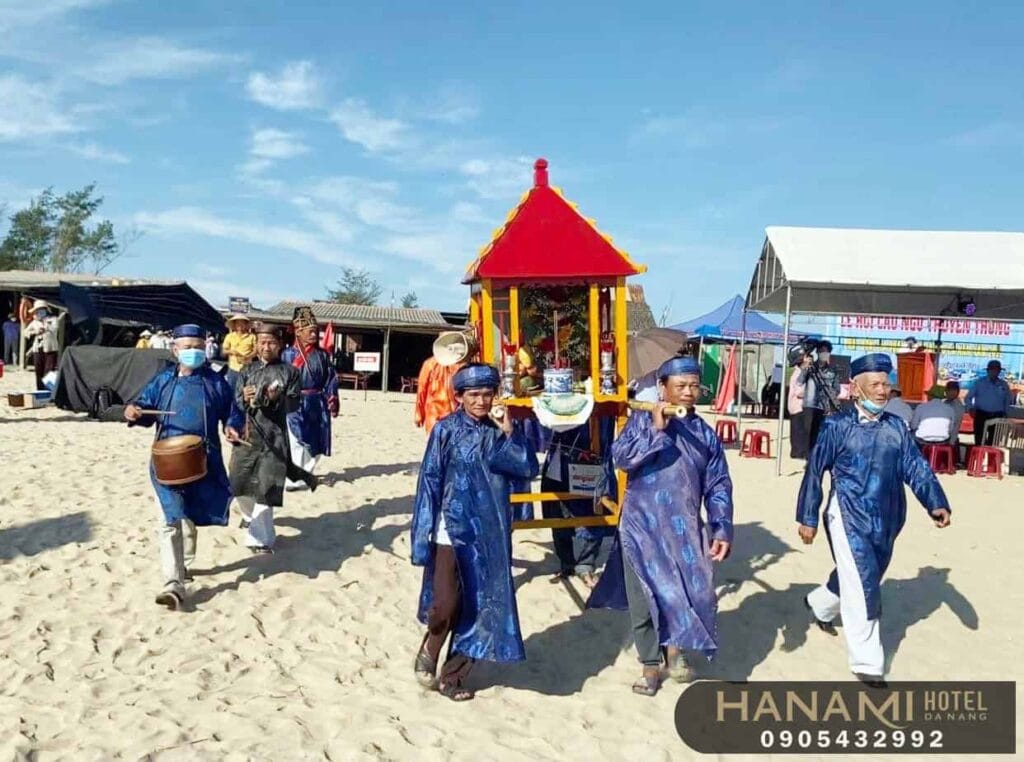
Nature Tourism
This includes exploring and discovering beautiful natural landmarks and areas such as forests, mountains, seas, lakes, streams, meadows, and national parks. Tourists can engage in activities such as mountain climbing, hiking, fishing, caving, scuba diving, or visiting and enjoying special natural landscapes. Exploring and enjoying beautiful natural landmarks and areas gives tourists unique and unforgettable experiences. Tourists can participate in many activities such as mountain climbing, hiking, fishing, caving, scuba diving, or visiting and enjoying special natural landscapes. Each landmark and area offers its own beauty and unique experience, contributing to making the trip interesting and memorable.
Recreational Tourism
This tourism includes visiting amusement parks, theme parks, zoos, playgrounds, stadiums, casinos, popular shopping venues, and other entertainment activities. Tourists can enjoy games, go on rides, watch performances, and participate in sports and entertainment activities at these locations.
Tourists can enjoy games, participate in sports and entertainment activities at places like amusement parks, theme parks, zoos, playgrounds, stadiums, casinos, and explore popular shopping venues. With the diversity and richness of these activities, tourists can create memorable moments during their trip.
Arts and Culture Tourism
This includes experiencing art and cultural events such as watching art performances, cinema, live music, opera, ballet, visiting art exhibitions, participating in art courses, or engaging in local cultural events.
These artistic and cultural experiences not only bring joy and relaxation but also help tourists discover and understand more about the local culture, history, and artistic development. At the same time, participating in these activities creates opportunities for interaction, connection, and sharing of artistic and cultural passions with other art lovers.
Sports and Adventure Tourism
Activities include mountain climbing, hiking, cycling, wall climbing, caving, surfing, scuba diving, swimming, exploring terrain, camping, and other adventurous activities.
These sports and adventure activities bring excitement, challenge, and discovery to tourists. However, before participating in any activity, tourists should check safety and comply with local regulations to ensure a safe and memorable experience.

Resort and Relaxation Tourism
Enjoy a relaxing holiday at resorts, villas, luxury hotels, or famous beach, mountain, or city destinations. Tourists can enjoy spa services, massages, yoga, swimming, golfing, and participate in recreational activities at the resort.
Enjoying a relaxing holiday at resorts, villas, luxury hotels, or famous destinations provides tourists with an enjoyable and serene experience. From enjoying spa services, yoga, and swimming to playing golf and participating in recreational activities, people can find relaxation and happiness in their vacation.
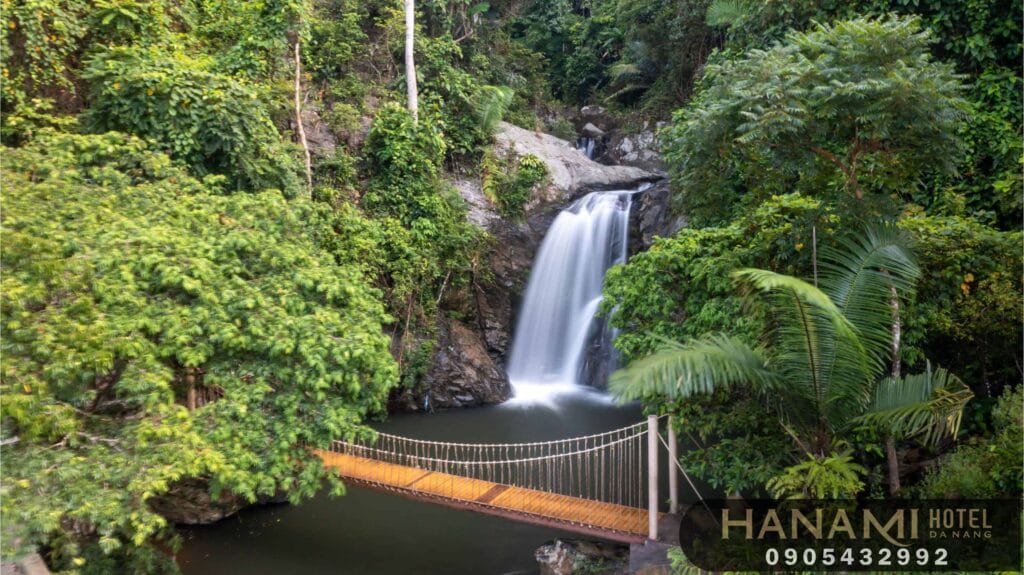
As we conclude this journey into the intricacies of tourism products, we hope you have gained a deeper appreciation for the myriad experiences and services that come together to create memorable travel moments. Here at Hanami Hotel Danang, our greatest reward is crafting unforgettable memories for our guests against the backdrop of this vibrant coastal city and the alluring Vietnamese culture.
We invite you to become part of this tapestry yourself—allow us to be your guide as you explore lantern-lit streets, discover local delicacies, and find sanctuary in the arms of gentle waves and cherry blossoms in bloom.
Our tailored experiences, meticulous service, and insider knowledge of Danang’s hidden gems await. Contact us at Hanami Hotel Danang or visit hanamihotel.com to begin your journey today.
CONTACT INFORMATION:
- Address: 61-63 Hoang Ke Viem, Bac My An, Ngu Hanh Son, Da Nang
- Phone: 0905432992
- Email: [email protected]
- Website: https://hanamihotel.com
- Google Map: https://g.page/hanamihotel
- Facebook : https://facebook.com/hanamihotel
Bài viết liên quan:
- Dong Dinh Musium – The Memory garden between Da Nang’s Mountains – Hot Spot for Tourism
- DA NANG TOURISM – THE TRANQUIL AND ANCIENT BEAUTY OF HOI AN
- TOP 7 BEST ECO-TOURISM SITES IN DA NANG
- Ngam Doi eco-tourism zone in Danang
- YEN RETREAT IN HOA BAC – DA NANG: BEST PLACE FOR EXPERIENCING ECO-TOURISM IN DA NANG
- CHILLING OUT AT SUOI MO ECO-TOURISM AREA IN DA NANG
- Hoa Bac tourism sector – Get back to nature in Danang
- Da Nang Beach Tourism Season 2023
- Things you don’t know about MICE tourism in Da Nang
- What’s special about the Da Nang Golf Tourism Festival?
About The Author
Lê Thị Kiều Trinh
Hanami đề xuất, bài viết mới nhất.
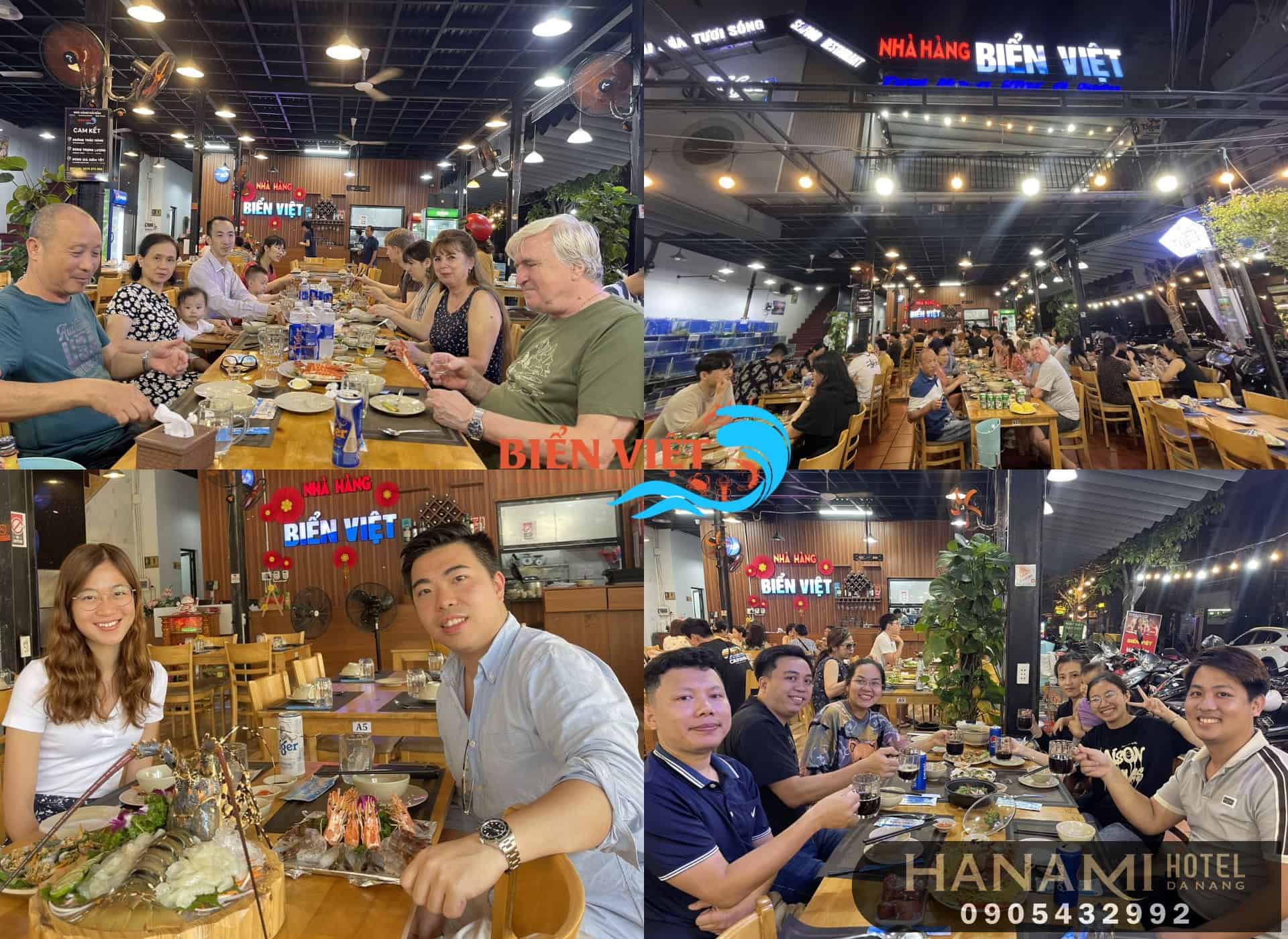
Discover Bien Viet Seafood Restaurant, Reviews by Hanami
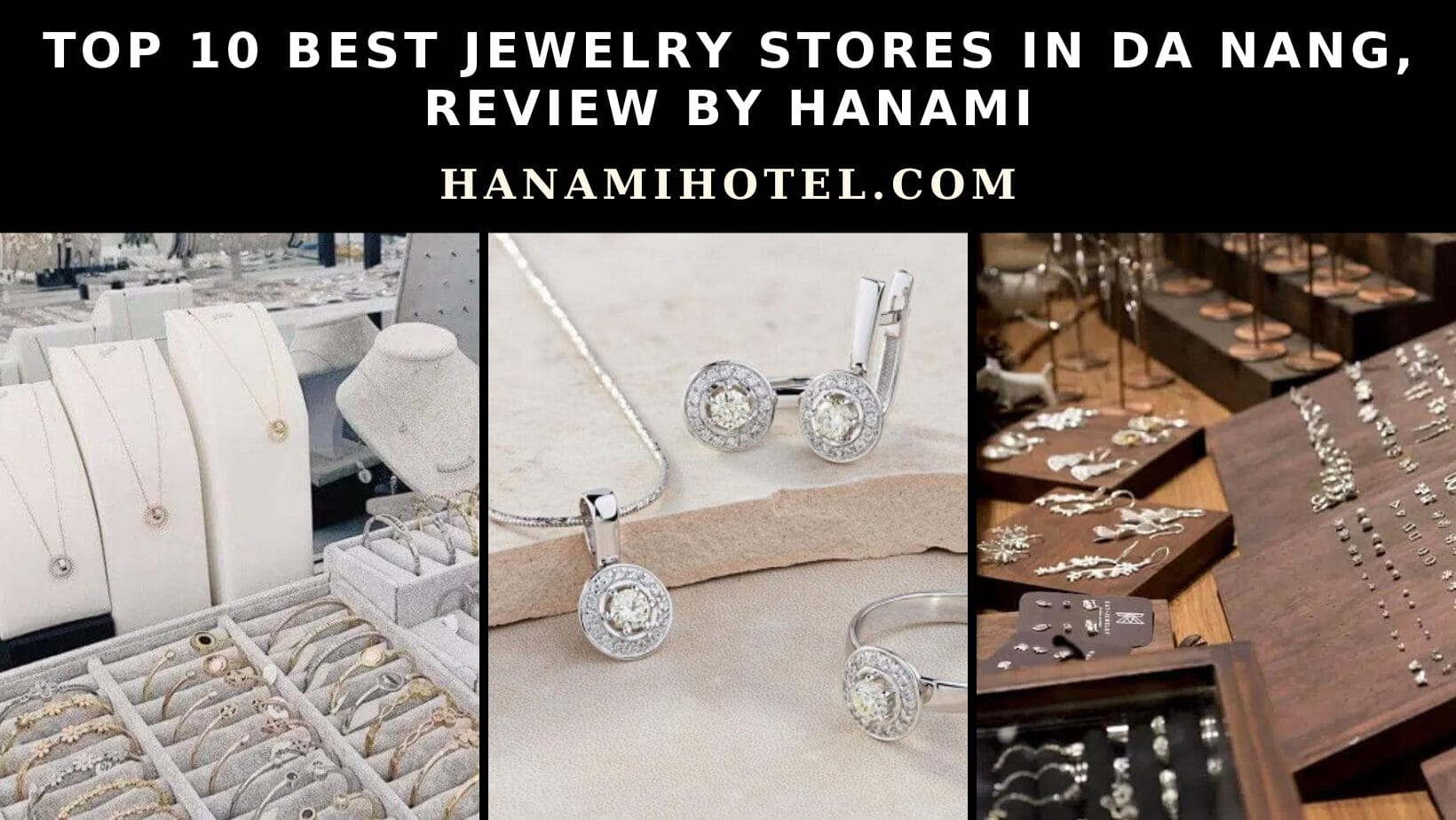
Top 10 best jewelry stores in Da Nang, review by Hanami

TOP 11+ BEST IPHONE SCREEN REPLACEMENT ADDRESS IN DA NANG, REVIEWS BY HANAMI
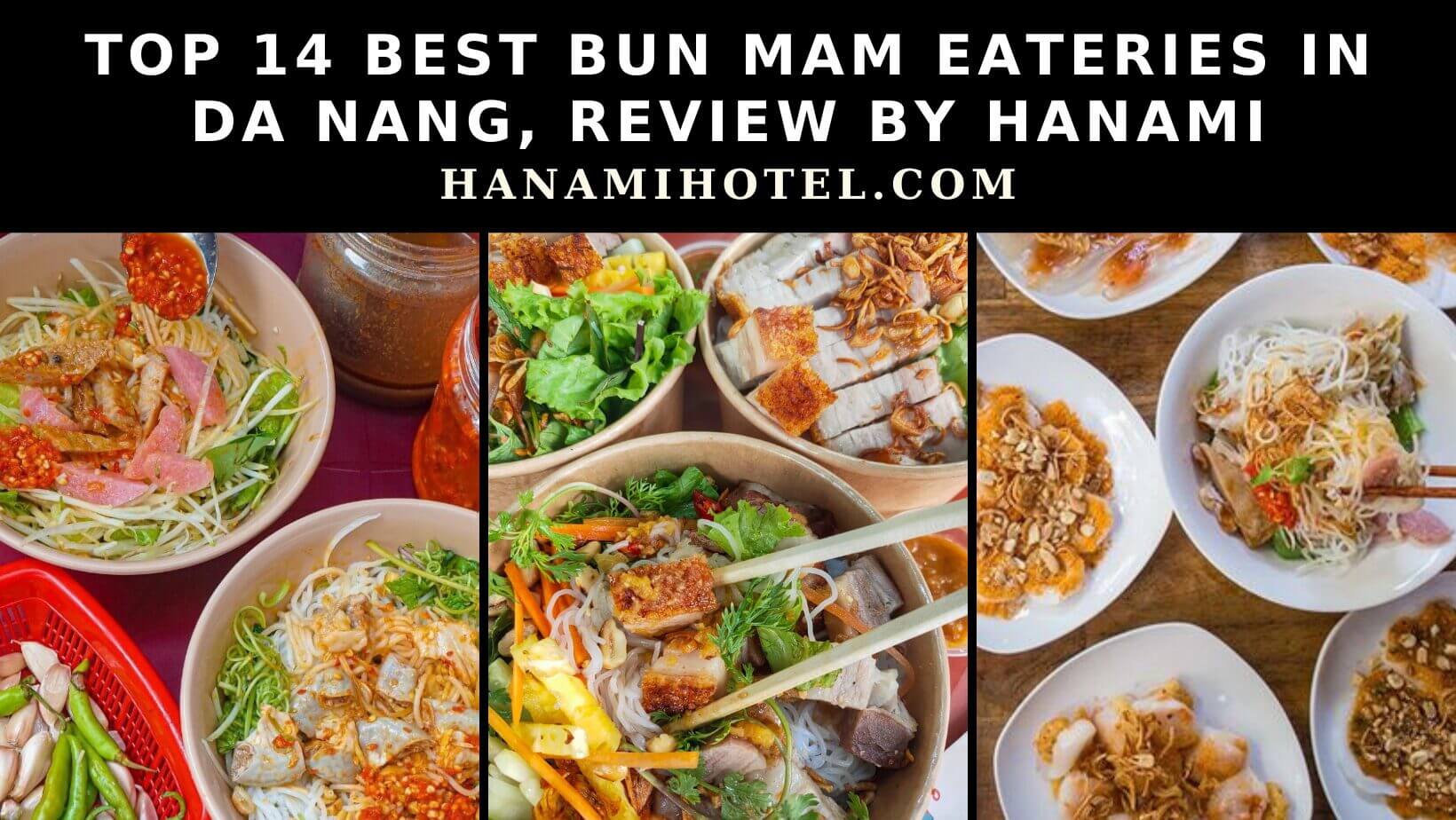
Top 14 best bun mam eateries in Da Nang, review by Hanami
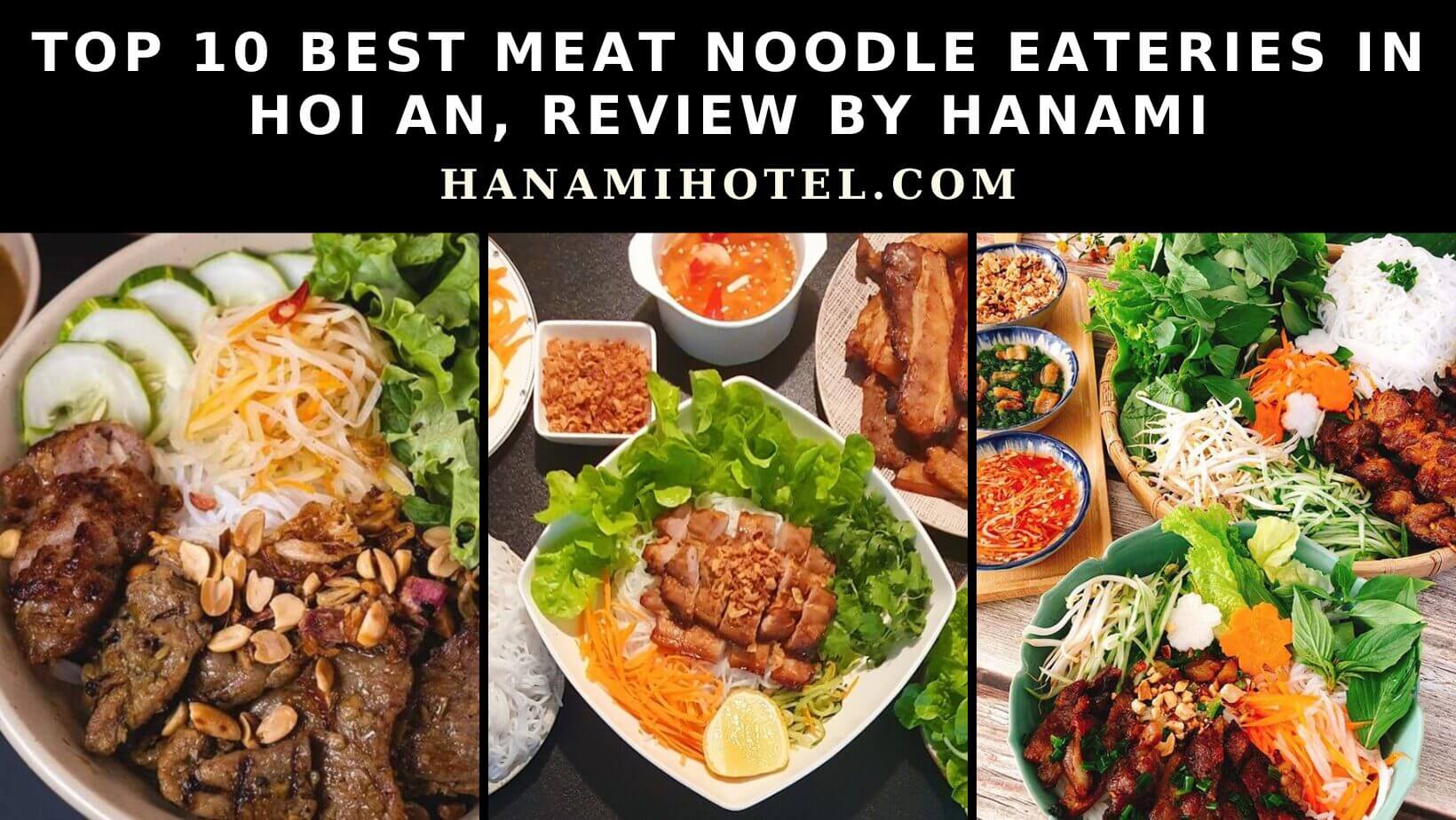
Top 10 best meat noodle eateries in Hoi An, review by Hanami
Academia.edu no longer supports Internet Explorer.
To browse Academia.edu and the wider internet faster and more securely, please take a few seconds to upgrade your browser .
Enter the email address you signed up with and we'll email you a reset link.
- We're Hiring!
- Help Center

Understanding the Tourism Product

The aim of this paper is to propose a marketing-oriented definition of the tourist product as well as a classification system of its components based on an extensive review and analysis of tourism marketing literature. Tourist products satisfy the tourist needs and are the objects of the transactions between tourists and businesses. Determining the tourist products is most helpful for social scientists interested in understanding the aforementioned transactions and the benefits derived by consuming these products. This proves to be a challenging task, though, due to the lack of a common understanding among the authors who have explored this issue as well as due to the different levels of tourist products and their complex nature. For instance, tourist products can be determined on two distinct levels: ➢ The total tourist product comprises a combination of all the elements, which a tourist consumes during his/her trip. ➢ The specific products are components of the total tourist product and can be sold as individual offerings such as accommodation, transport, attractions and other facilities for tourists. This paper focuses on the total tourist products, that can be understood as bundles of tangible and intangible components, based on an activity at a destination. It is the consumption of such a bundle that allows engaging in specific activities at the destination(s) and that creates the travel experience of each individual. Thus, the tourist product can be equated with the total travel experience. Tourist products are characterised by their complex nature. They consist of numerous components ― most of which constitute products themselves ― with each one playing a distinct functional role in this “amalgam of tangible and intangible elements”. These components complement each other, i.e. they are functionally interdependent as each one provides only a part of the total sum of benefits sought by tourists.
Related Papers
Badita Amalia , Liliana Popescu , Mazilu Mirela
This study aims at highlighting the tourism market trends in the Oltenia development region, Romania, outlining a diagnosis of the tourism phenomenon. The main objectives of the study are: the inventory of the existing tourism resources and specific economic factors that influence the comparative and competitive advantages of the studied region, the determination of the most important characteristics of the tourism demand and the development of tourism product in order to address all the tourist requirements, to take also into account a proper market segmentation. All these issues are among the key elements for an effective management of the tourist destination. The study draws some conclusions which can be important for the further plans or policies which will define the geographical, cultural and social elements of the identity of Oltenia Region and which will enhance the economical sector of the area.
Tourism Today Tourism Today
Dimitris Koutoulas
The in-depth analysis of a destination’s performance is a prerequisite for effective tourism planning and for efficiently using available marketing funds. Decisions concerning issues such as marketing strategy, market segmentation and product development, should be based on the actual situation that a destination faces. By making decisions according to well-documented facts, the risk of unsuccessful policies is minimised. However, not all destination marketing organisations (DMOs) are competent to successfully conduct these kinds of analysis. Their insufficiency may be attributed to the lack of destination marketing know-how and/or the availability of necessary data. An overview of the destination performance in the case of Rhodes, one of Greece’s major tourist destinations, has revealed, among others, the deficiencies in situation analysis characterising the island’s DMOs. These deficiencies are reflected in the marketing activities conducted and funded by those organisations and the poor market performance of Rhodes in recent years. Based on the situation analysis of Rhodes, a Destination Performance Analysis Tool is proposed to support decision making for the destination marketing and planning task with the necessary data. This tool reflects the requirements of destination marketing and planning at the local and regional level. Recommendations about the collection of tourism statistics and other performance data are also made. KEYWORDS: destination performance analysis, tourism marketing efficiency, Rhodes, DMO evaluation, tourism statistics, seasonality, benchmark
Corporate Rivalry and Market Power: competition …
"This paper examines the relations between tour operators and resort hotels and the latter’s competitive environment. The focus is on the Mediterranean, a destination that would not have developed so rapidly over the last 50 years without the tourist flows generated by tour operators. The example of Greece is used to illustrate this relationship. The basis of the European holiday market is the inclusive tour (or package tour) provided by tour operators. Greek resort hotels are predominantly orientated towards the inclusive tour market as they secure 60 per cent of their clientele through tour operators. Most of these hotels actually outsourced their marketing function to tour operators, thus lacking the ability to market themselves in an efficient way on the international marketplace. This hasn’t been a problem for decades, as tour operators supplied a steady flow of business to resort hotels. However, the recent drop in Greece-bound inclusive tour traffic and the increasing pressure applied by tour operators to lower room rates is now forcing Greek hoteliers to explore other markets and distribution channels. Despite the growing market influence of tour operators and the recent decline in Greece-bound inclusive tour traffic, hotels working with the major operators such as TUI, Thomas Cook, Rewe and MyTravel, appear to achieve better results than the average hotel according to the aforementioned survey. These hotels also evaluate their cooperation with the tour operators more positively and are more optimistic in their expectations regarding tour-operator generated business in the near future when compared to the sample’s average hotel. However, the outlook in regard to inclusive tours is one of growing competition among Mediterranean destinations combined with a clear cost disadvantage in the case of Greek resort hotels."
Mohsen Jafarpour
This study seeks to understand the relations between destination tourism product (DTP) and domestic tourist satisfaction with Ghorogh coastal Park (located in the north of Iran, Hashtpar city). In order to achieve the purpose of the study two-hundred questionnaires were distributed among tourists from August to September in 2012. The main results indicate that destination facilities affect tourist satisfaction, directly and indirectly. Moreover, destination accessibility and costs of tourists affect tourist satisfaction, directly. By using the DTP approach, it is possible to analysis influencing factors in satisfaction with coastal destinations accurately, clearly, and to prevent the issue from being more complicated.
Halah Helmy
An industry is characterized by a generic product and production process. For tourism to be considered an industry, it is necessary to show that such a genetic product and process exist. This paper argues that they do exist, and presents a model that describes the product as consisting of five elements: the physical plant, service, hospitality, freedom of choice, and involvement. The generic production begins with raw inputs, progresses through intermediate inputs and outputs, to final outputs, or the tourist's experience. The model is a potentially important contribution in the debate about tourism as an industry; it also formalizes the intuitive notion of many authors that tourism products are fundamentally experiences. R~sum~: Tourisme: le produit. Une industrie se caractErise par un produit et un processus de production gEn6riques. Pour que le tourisme soit considErE une industrie, il faut dEmontrer qu'il existe un produit et un processus g6nEriques. L'article soutient que ces deux ElEments existent bien pour le tourisme. Le produit comprend cinq ElEments: b~timents et materiel, service, hospitalitE, libert6 de choix et engagement. La production commence par des consommations brutes et progresse par des Echanges Economiques intermEdiaires jusqu'au point final de production , c'est-~t-dire l'expErience du toutiste. Le module pourrait bien Stre une contribution impor-tante au dEbat du tourisme somme industrie; il formalise aussi l'idEe intuitive que les produits du tourisme sont en comme des experiences. Mots-cl~s: produit, industrie, offre, processus de production, cbtE Economique du toutisme, definition.
Tour operators are a major source of tourist traffic for a large number of destinations including large European cities. The latter have been witnessing a steady rise in city breaks during recent years with a significant portion of visitors travelling on inclusive tours assembled by tour operators. Tourist authorities of these cities are, therefore, aiming their marketing efforts also at tour operators offering city breaks programmes. Properly understanding a destination’s standing in those programmes is a prerequisite for efficiently promoting the destination to tour operators. Analysis of tour operator catalogues has long been employed by both hotels and destination marketing organisations as a tool to benchmark one’s own position against the competitive set. Such a brochure analysis has yielded a wealth of information relevant to strategic marketing planning when it was applied in the case of Athens. This analysis, conducted in late 2008, clearly indicated the position of Athens in the city breaks programmes of tour operators. The method of content analysis was applied to the city breaks catalogues of eight of Europe’s largest tour operators headquartered in Germany and the UK. Comparisons were made between Athens and its competitive set as defined in previous research. Aspects that were reviewed included scope and depth of the presentation of each city, local activities and services offered to tourists in each city, characteristics of hotels on offer, proposed events and itineraries etc. Shortcomings of Athens compared to its competitive set were clearly identified. The final outcome of this research has been a series of practically oriented policy recommendations to the tourist authorities of Athens as to how to market the city more efficiently to tour operators selling city breaks. These recommendations especially focus on product development, sales promotions and web-based activities aimed at tour operators with city breaks programmes. CITATION: Prountzou, E. and Koutoulas, D. (2009). Tour Operator Catalogue Analysis as a Marketing Planning Tool for City Breaks Destinations: The Case of Athens. Proceedings of the International Scientific Conference on Tourism Development and Management organized by the Leeds Metropolitan University, the Cyprus University of Technology and the Croatian Institute of Tourism, Kos Island, Greece, 11-14 September 2009 [ISBN: 978-9963-9799-0-5]
Asian Social Science
Hamzah Jusoh
Dr Razaq Raj
Tourism Today, Vol. 6, pp. 19-32, Fall 2006
Stanislav Ivanov
Ivanka Vasenska
The concept of tourism destination attractiveness does not constitute a new topic in the scientific literature in the field of tourism. On the contrary, attention has been brought towards it since last century's 60 years. For a relatively long period, however, the existing studies show out that they not only did not lead to the creation of a single platform for evaluation, but rather have resulted in a fragmentation of the researchers' opinions. At present, numerous authors have been trying to identify the destination's attractiveness and factors influencing tourists' decision-making process to assess a given area as a desirable vacation spot. As the attractiveness of the area it does not only depend on the characteristics of its corresponding site and the local population, but also from tourist cognitive image perception of the destination. The present paper comprises the results from two separate studies conducted in parallel from 2011 to 2014 and it aims to outline the various factors that could influence the process of increasing of attractiveness and image recognition of Bulgaria as a tourism destination. For this purpose a multifactorial analysis of the whole tourism destination of Bulgaria was applied alongside with a cultural profiling of an almost iconic and landmark micro destination for cultural tourism such as the town of Plovdiv (or the ancient Phillipopolis found by the king Phillip the Second, the father of Alexander the Great).
RELATED PAPERS
Tourism & Management Studies
Serafeim Polyzos
Andrzej Stasiak
Journal of Management and Sustainability
Advance in Tourism Studies in Memory of Clara S. Petrillo
Valentina Della Corte
Tourism and Hospitality Research
Georgia Zouni
Hossein Nezakati
Users umali
Amitabh Mishra
Logie Makoni
ERCAN AKKAYA
Tourism Management
Stephen Witt
Dr. Amitabh Mishra
IJSES Editor
Armin Mikos von Rohrscheidt
Antonia Correia
Morakot Boonsirichai
Atila Yuksel
Dobrica Jovicic
Decision making
Jerry M A M E D I Middslough
International Journal of Hospitality & Tourism Systems
Publishing India Group
Tourism Analysis
Muzaffer Uysal
Nicholas Jeremiah
Mahsa Mansoori
Bahram Zeinali , Mohsen Jafarpour
Soultana Tania Kapiki
Dr. Mulugeta Girma
Sweetie Feranmi
RELATED TOPICS
- We're Hiring!
- Help Center
- Find new research papers in:
- Health Sciences
- Earth Sciences
- Cognitive Science
- Mathematics
- Computer Science
- Academia ©2024
You are currently browsing
- Go to ETC Dashboard
More results...
- Our Structure
- Annual Reports
- Climate Action Plan
- Full Members
- Associate Members
- History of ETC
- Cooperation with the EU
- Requests for Proposals
- Publications
- Visual Content
- Market Intelligence Group
- Digital Channels
- Marketing Group
- Visa Facilitation
- Sustainability
- Connectivity
- Chapter Earth
- Tourism Manifesto
- Press Centre
Handbook on Tourism Product Development
Publication date: Oct 2011
Language: English

Tourism products are the basis for a destinations tourism sector operation: unless the tourism product meets the needs and expectations of tourists, the destination cannot realise its full potential. However, only few destinations focus their attention on the development and delivery of the various attractions and activities that make up the tourism product.
The UNWTO/ETC Handbook on Tourism Product Development outlines the essential elements in the process of tourism product development planning and implementation, e.g. coordination, consultation, collaboration co-opetition. It illustrates these principles through a range of successful approaches and case studies from around the world and sets out best practice examples and benchmarks by which destinations can assess their own product development system and methods.
Executive Summary
Table of contents.

Encyclopedia of Tourism pp 1–3 Cite as
Product, tourism
- Dimitris Koutoulas 3
- Living reference work entry
- First Online: 01 January 2015
120 Accesses
In a marketing context, products are bundles of tangible and intangible elements conveying benefits to satisfy needs. They may take the form of goods, services, ideas, events, persons, places, or organizations (Kotler and Armstrong 2008 ), fulfilling two distinct tasks. First, each product satisfies a need through the benefit(s) it incorporates. These are mostly the result of managerial decisions and the production process; however, the product’s need-fulfilling value is only perceived by the consumer. Benefits and values are thus cocreated by the firm and the consumer (Vargo and Lusch 2006 ). Second, products are the prerequisite for businesses to achieve their objectives relating to turnover, profitability, market share, and the like. Only by selling products that succeed in satisfying consumer needs can businesses earn a profit.
Tourism products are those which satisfy tourists’ needs. According to Jovicic, the latter are those that are “satisfied when movement is performed ( travel ...
This is a preview of subscription content, log in via an institution .
Jovicic, Z. 1988 A Plea for Tourismological Theory and Methodology. Revue de Tourisme 3:2-5.
Article Google Scholar
Kotler, P., and G. Armstrong 2008 Principles of Marketing. Upper Saddle River: Pearson Prentice Hall.
Google Scholar
Koutoulas, D. 2004 Understanding the Tourism Product www.academia.edu/1861406/Understanding_the_Tourism_Product (16 September 2014).
Medlik, S., and V. Middleton 1975 The Tourist Product and its Marketing Implications. In The Management of Tourism, A. Burkart and S. Medlik, eds., pp.131-139. London: Heinemann.
Paul, H. 1977 Marketing für Fremdenverkehr: Leitlinien für die Dienstleistungs- und Absatzpolitik im Herstellerbereich der Fremdenverkehrswirtschaft. Frankfurt: RKW.
Vargo, S., and R. Lusch 2006 Service-Dominant Logic: What It Is, What It Is Not, What It Might Be. In The Service-Dominant Logic of Marketing, R. Lusch and S. Vargo, eds, pp.43-56. Armonk: ME Sharpe.
Download references
Author information
Authors and affiliations.
Business Administration Department, University of Patras, Panepistimioupoli, 26504, Rio Patron, Greece
Dimitris Koutoulas
You can also search for this author in PubMed Google Scholar
Corresponding author
Correspondence to Dimitris Koutoulas .
Editor information
Editors and affiliations.
School of Hospitality Leadership, University of Wisconsin-Stout, Menomonie, Wisconsin, USA
Jafar Jafari
School of Hotel and Tourism Management, The Hong Kong Polytechnic University, Hong Kong, Hong Kong SAR
Honggen Xiao
Rights and permissions
Reprints and permissions
Copyright information
© 2015 Springer International Publishing Switzerland
About this entry
Cite this entry.
Koutoulas, D. (2015). Product, tourism. In: Jafari, J., Xiao, H. (eds) Encyclopedia of Tourism. Springer, Cham. https://doi.org/10.1007/978-3-319-01669-6_293-1
Download citation
DOI : https://doi.org/10.1007/978-3-319-01669-6_293-1
Received : 09 January 2015
Accepted : 09 January 2015
Published : 24 September 2015
Publisher Name : Springer, Cham
Online ISBN : 978-3-319-01669-6
eBook Packages : Springer Reference Business and Management Reference Module Humanities and Social Sciences Reference Module Business, Economics and Social Sciences
- Publish with us
Policies and ethics
- Find a journal
- Track your research
- Navigation principale
Tourism product, service
Development and marketing of a tourism package. The strict and narrow definition of a tourism product is a combination of services (accommodation, catering, entertainment, transport, excursions, and visits) at a destination, involving multiple places and providers. By extension, a “tourism product” is defined as a place designed for tourism, a type of accommodation, a tourist activity or even the practices/activities of a region or a country which are not the subject of coherent marketing offer.
In fact, this term is an economic concept inherited from the industrial world and applied to the field of tourism. Indeed, as Jean Gadrey (1992) has shown, the participation of the individual recipients is essential in the production process, which is not the case with the two other sectors of economic activity, industry, and agriculture. However, in the most standardised cases, such as the use of ATMs, this engagement is limited. On the contrary, co-presence with client-facing staff is essential and valued in tourism. The term “service” resolves such ambiguity. This is why Jean Gadrey proposed the term “ servuction ” (a portmanteau of service and production) to express this idea of the participation of individuals in the delivery of the service. But this word is rarely used by analysts who prefer the more resonant term “coproduction”.
Thus, tourists are co-producers of their experience. This approach makes sense when the focus is on the conditions and circumstances of implementation, when the skills and dispositions of tourists (Guibert, 2016) are called upon. This must therefore be taken into account when assessing the quality of a service.
Philippe VIOLIER
Bibliography
- Gadrey Jean, 1992, L’Économie des services . Paris, La Découverte.
- Christophe Guibert, 2016, «Les déterminants dispositionnels du “touriste pluriel”. Expériences, socialisations et contextes», SociologieS , en ligne , consulté le 19 octobre 2016.
To read this content please select one of the options below:
Please note you do not have access to teaching notes, defining the tourist product — and its importance in tourism marketing.
The Tourist Review
ISSN : 0251-3102
Article publication date: 1 January 1971
Who are those principally engaged in marketing any commodity? They are the specialists in market research, in publicity, in public relations, in sales and in physical distribution and they have this in common: that they communicate with the consumer. Their role is two‐fold, before and after production.
Jeffries, D.J. (1971), "Defining the tourist product — and its importance in tourism marketing", The Tourist Review , Vol. 26 No. 1, pp. 2-5. https://doi.org/10.1108/eb057631
Copyright © 1971, MCB UP Limited
Related articles
We’re listening — tell us what you think, something didn’t work….
Report bugs here
All feedback is valuable
Please share your general feedback
Join us on our journey
Platform update page.
Visit emeraldpublishing.com/platformupdate to discover the latest news and updates
Questions & More Information
Answers to the most commonly asked questions here

- Get IGI Global News

- All Products
- Book Chapters
- Journal Articles
- Video Lessons
- Teaching Cases
Shortly You Will Be Redirected to Our Partner eContent Pro's Website
eContent Pro powers all IGI Global Author Services. From this website, you will be able to receive your 25% discount (automatically applied at checkout), receive a free quote, place an order, and retrieve your final documents .
What is Tourist Product

Related Books View All Books
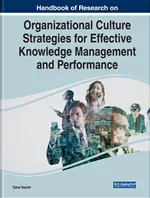
Related Journals View All Journals
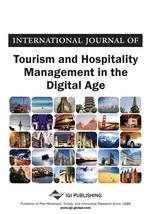

IMAGES
VIDEO
COMMENTS
Definition of Tourism Product. Burkat and Medlik say tourism products to an array of integrated products, which consist of objects and attractions, transportation, accommodation and entertainment, where each element of the tourism product is prepared by individual companies and are offered separately to consumers (tourist/tourist).
Tourism products are the basis for a destination's tourism sector operation: unless the tourism product meets the needs and expectations of tourists, the destination cannot realise its full potential. However, only few destinations focus their attention on the development and delivery of the various attractions and activities that make up the ...
Abstract. The aim of this paper is to propose a marketing-oriented definition of the tourist product as. well as a classification system of its components based on an extensive review and analysis ...
Product Development. As defined by UN Tourism, a Tourism Product is "a combination of tangible and intangible elements, such as natural, cultural and man-made resources, attractions, facilities, services and activities around a specific center of interest which represents the core of the destination marketing mix and creates an overall visitor experience including emotional aspects for the ...
Definition of tourism product. A tourism product is the elements and services created to meet the needs of tourists during their travels. These are the components and experiences that tourists can purchase or use to enjoy and make the most of their trip.
Understanding the Tourism Product. Dimitris Koutoulas. The aim of this paper is to propose a marketing-oriented definition of the tourist product as well as a classification system of its components based on an extensive review and analysis of tourism marketing literature. Tourist products satisfy the tourist needs and are the objects of the ...
Tourism products are the basis for a destinations tourism sector operation: unless the tourism product meets the needs and expectations of tourists, the destination cannot realise its full potential. However, only few destinations focus their attention on the development and delivery of the various attractions and activities that make up the ...
• The tourism product market The tourism product market is composed of goods and services designed to satisfy the demand for holidays and business travel. Tour operators develop packages that are either sold directly though their own distribution outlets or through travel agencies (retailers) on a commission basis. D Definition of tourism package
Product, tourism. In a marketing context, products are bundles of tangible and intangible elements conveying benefits to satisfy needs. They may take the form of goods, services, ideas, events, persons, places, or organizations (Kotler and Armstrong 2008 ), fulfilling two distinct tasks. First, each product satisfies a need through the benefit ...
Abstract. This chapter introduces its readers to the concept of tourism. It sheds light on the rationale for tourism, as it explains the tourists' inherent motivations to travel. It also describes different aspects that together make up the tourism industry. Tourists travel to destinations that are accessible to them.
In this form of product diversification the primary tourism products in a destination are largely based on a number of niche market, small-scale products. On the one hand, the destination's niche products may develop separately and in parallel, with discrete tourist market segments being attracted, and with the producers of the different niche ...
The tourism product is a key component of the tourism industry, and it refers to the total package of experiences, products, and services that tourists seek, consume, and perceive as value in a particular destination. Understanding the characteristics of a tourism product is important for creating a unique and appealing experience that will attract and retain visitors.
Handbook on Tourism Product Development. Description. PDF. Tourism products are the basis for a destination's tourism sector operation: unless the tourism product meets the needs and expectations of tourists, the destination cannot realise its full potential. However, only few destinations focus their attention on the development and delivery ...
Tourism Product Development Handbook on Tourism Product Development The World Tourism Organization (UNWTO), a United Nations specialized agency, is the lea-ding international organisation with the decisive and central role in promoting the development of responsible, sustainable and universally accessible tourism. It serves as a global forum
tourist product, marketed under a particular product or brand label, and sold at an inclusive price (Middleton, 1988:271). vi. The tourist product is a composite product consisting of several ...
Observing that "[t]he tourism product needs clear definition" (1988:211), they provide two views: the tourism product is a "collection of physical and service features together with symbolic associations which are expected to fulfil the wants and needs of the buyer" (1988:59) and, more succinctly, the tourism prod- uct "is a satisfying activity ...
Tourism product, service. Development and marketing of a tourism package. The strict and narrow definition of a tourism product is a combination of services (accommodation, catering, entertainment, transport, excursions, and visits) at a destination, involving multiple places and providers. By extension, a "tourism product" is defined as a ...
Tourism product is a group of various components and elements which are combined together to satisfy the needs and wants of the consumers. The product in tourism industry is the complete experience of the tourist from the point of origin to the destination point and back to the origin point. The product in Tourism may be defined as the 'sum ...
A tourism product is "a package of satisfactions offered for sale or exchange, and consumed by tourists.". "The combination of tangible and intangible elements offered by a destination, attraction, or service provider that satisfies the needs and wants of tourists.".
tourism, the act and process of spending time away from home in pursuit of recreation, relaxation, and pleasure, while making use of the commercial provision of services.As such, tourism is a product of modern social arrangements, beginning in western Europe in the 17th century, although it has antecedents in Classical antiquity.. Tourism is distinguished from exploration in that tourists ...
Tourism products can be classified into different categories based on various criteria, including the type of experience offered, the location of the experience, and the target market. Some common classifications of tourism products include: Natural Tourism Products. Man-made Tourism Products.
Defining the tourist product — and its importance in tourism marketing - Author: D.J. Jeffries Who are those principally engaged in marketing any commodity? They are the specialists in market research, in publicity, in public relations, in sales and in physical distribution and they have this in common: that they communicate with the consumer.
What is Tourist Product? Definition of Tourist Product: It is the set of goods and services that, when complemented, promote the specific practice and consumption of a given activity within tourism. ... Although nature tourism is the main tourist product, other products have been determined to complement the territory's characteristics. Among ...